Juglans nigra – Black walnut
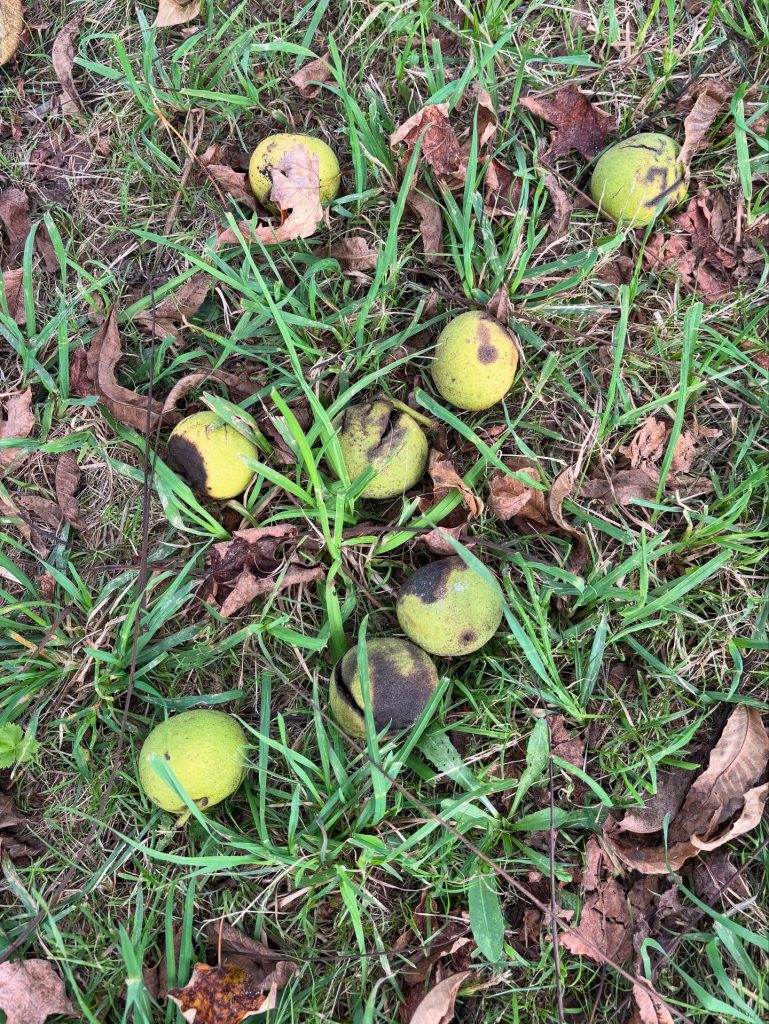
Black walnut (Juglans nigra) is a native tree that produces edible nuts September-October. They are closely related to cultivated walnuts (Juglans regia). They are commonly found in forest edges and along rivers. Trees receiving more sun will produce more nuts. Black walnuts can be identified by their alternate compound leaves which are made up of […]
Quercus alba – White Oak
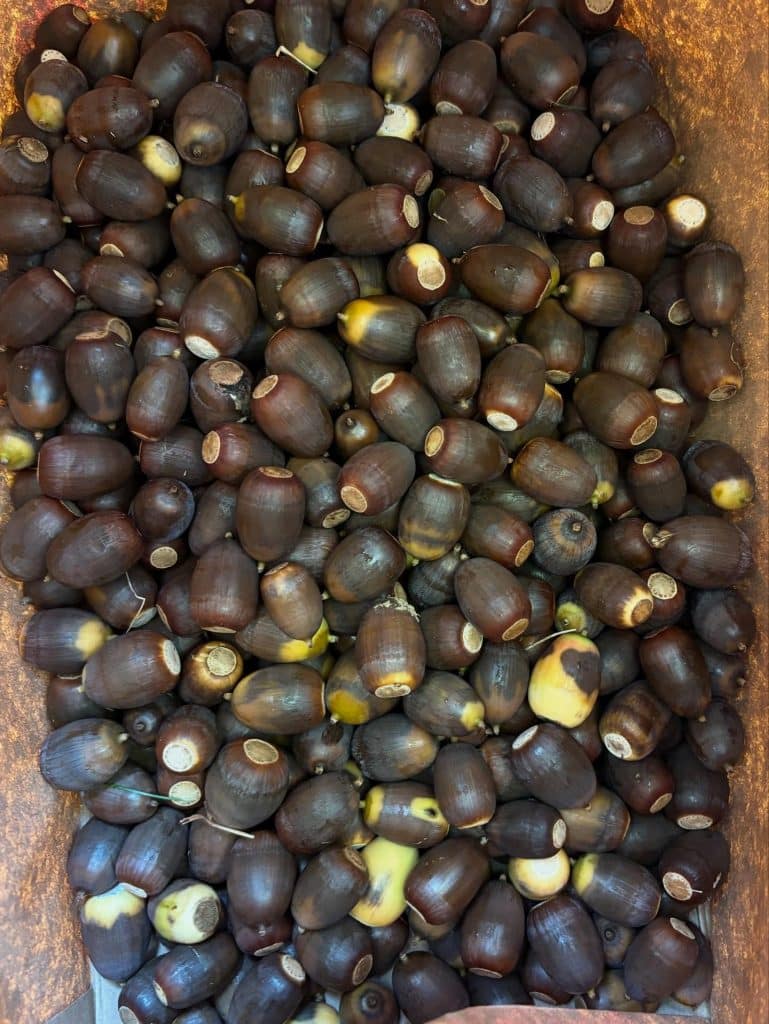
White oak (Quercus alba) is a large native tree with leaves with rounded lobes. White oak acorns develop in one season and fall off the tree in autumn. Red oaks develop in two seasons and tend to be more bitter. Acorns are edible, but high in tannins so must be hot or cold leached before […]
Juglans cinerea – Butternut
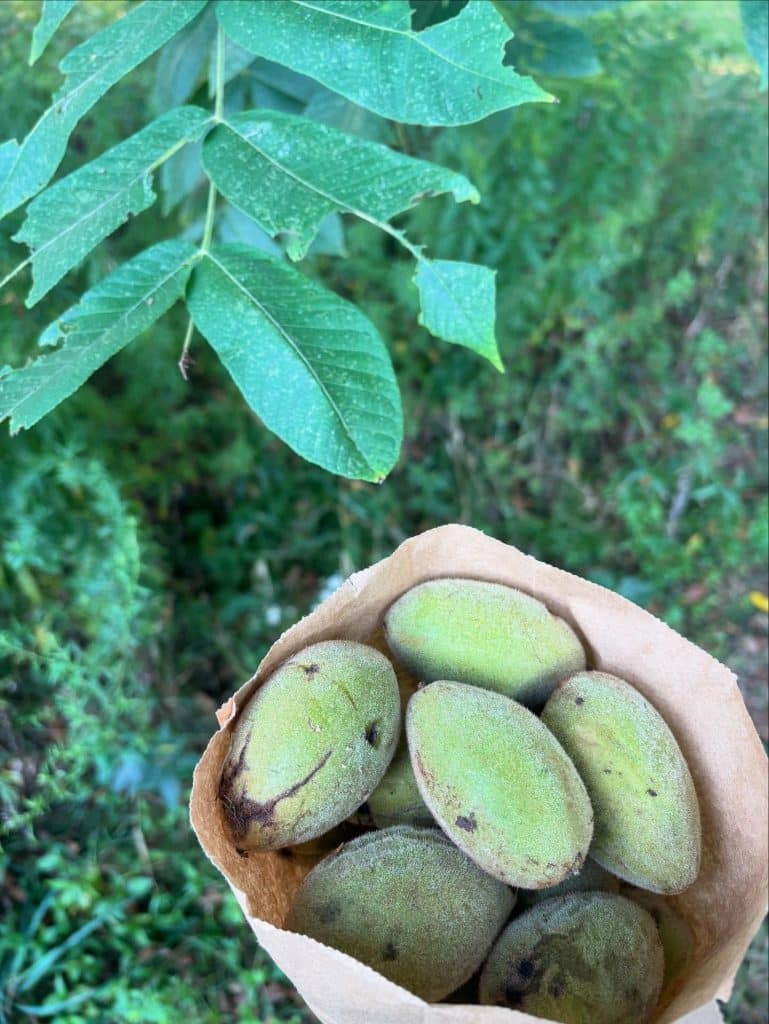
Butternut (Juglans cinerea) is a native tree with edible nuts. It can be found in rich soil and abandoned fields. Populations in Connecticut are decreasing due to a fungal disease called butternut cancer. Butternut, also known as white walnut, can be identified by its compound leaves with up to 19 toothed leaflets. Nuts are encased […]
Vitis labrusca – Fox Grapes
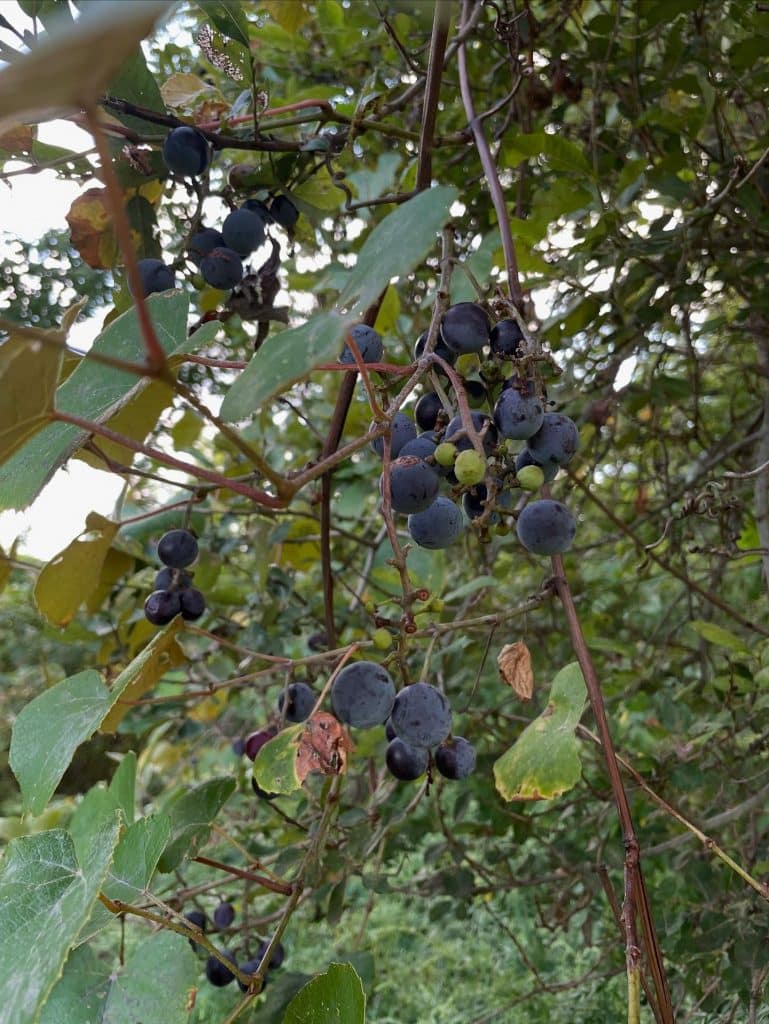
Fox grapes (Vitis labrusca) are our largest native grape species. They are the ancestor to the Concord grape. Fox grapes can be found in partial to full sun at forest edges, woodland clearings, and along rivers. The vine is often seen climbing up trees and fences. Fox grapes can be identified by their leaves which […]
Ginkgo biloba – Ginkgo
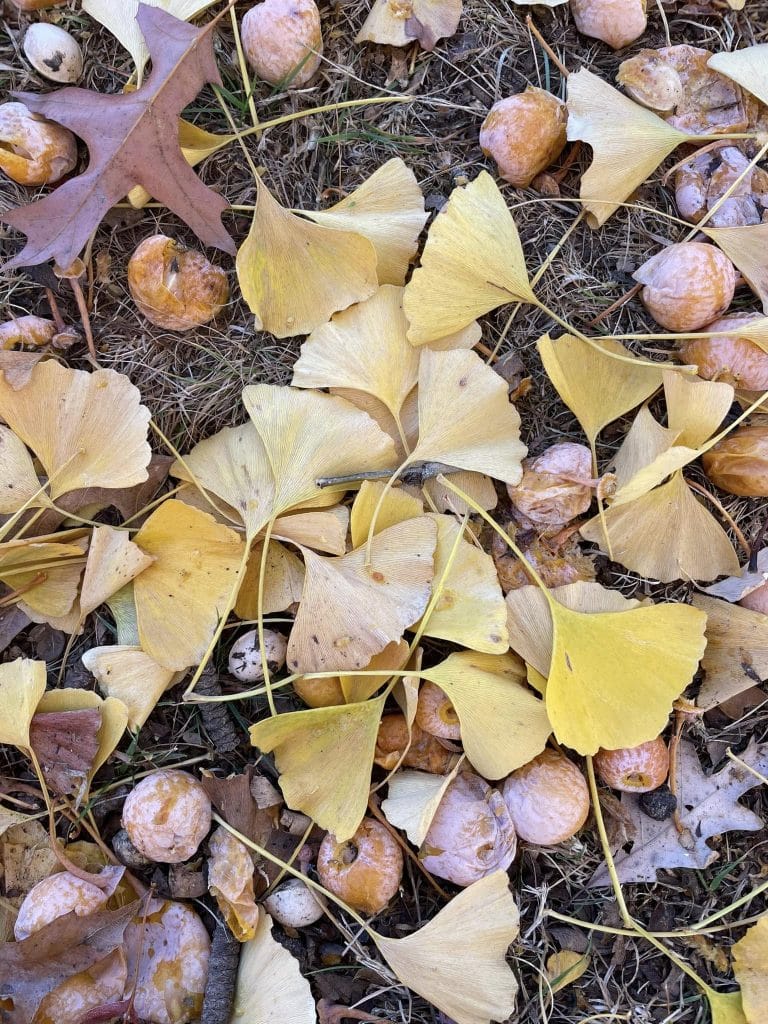
Ginkgo (Ginkgo biloba) is a unique tree that is native to a province in China. Ginkgo is the only plant in its genus, family, order, class, and division to still exist today. Ginkgo is often planted in suburban and urban areas. It can tolerate air and soil pollution and high levels of road salt. There […]
Diospyros virginiana – American Persimmon
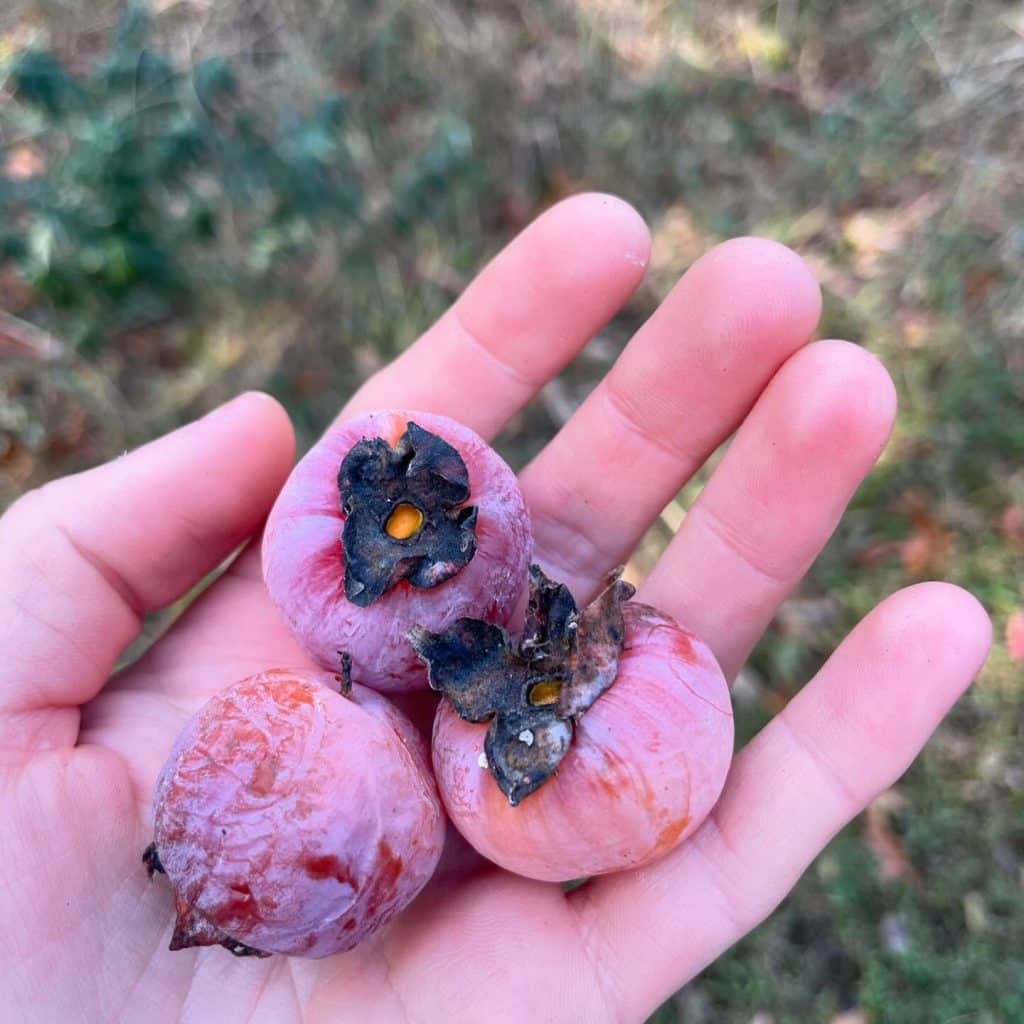
American Persimmon (Diospyros virginiana) is a native plant that can be found in central and eastern United States. Southern Connecticut is the northern range for persimmons. It can be found growing along field edges. It prefers full sun, but can tolerate partial shade. Persimmon trees have dark gray and furrowed bark. The oval leaves are […]
Setaria faberi – Giant millet
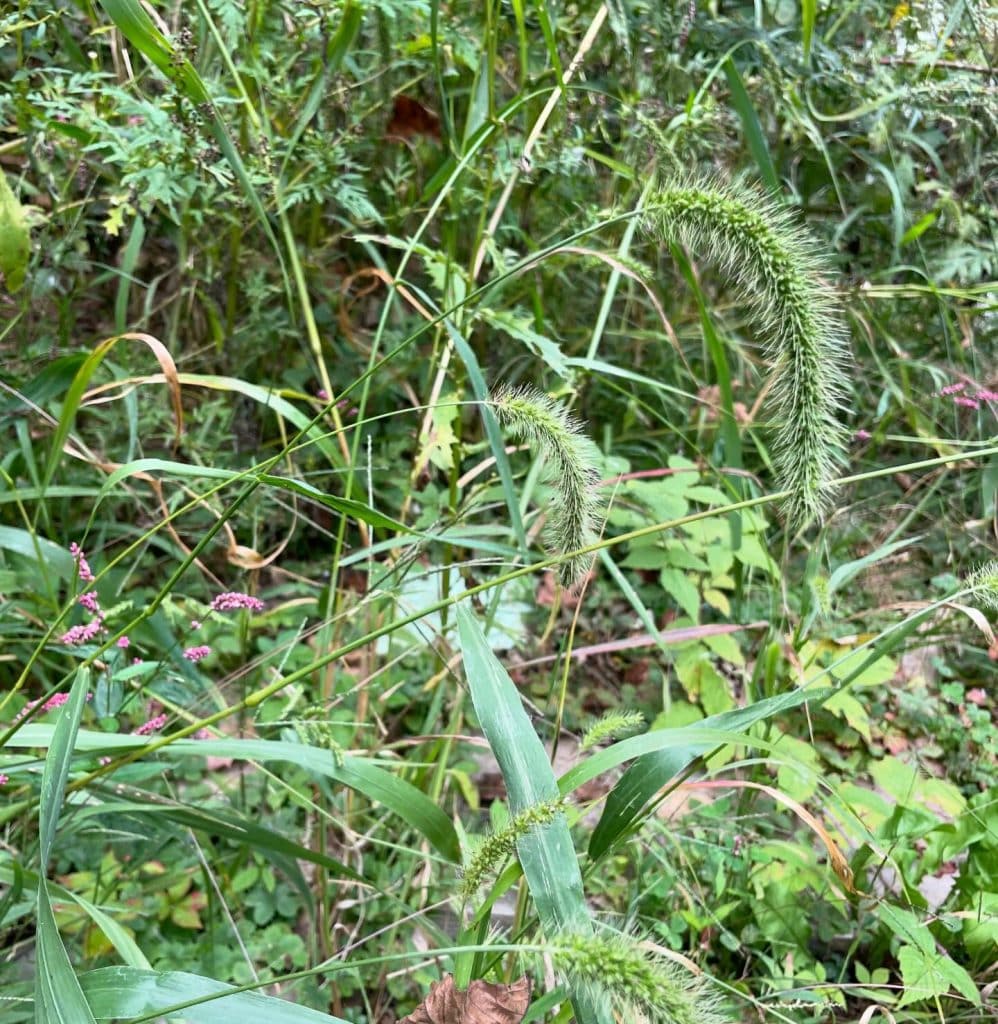
Giant Millet (Setaria faberi) is an introduced plant from Asia that can be used as a grain. It is an annual that sets seed late summer- fall. Giant millet is a common weed of corn fields. It prefers full sun and compact soil that is high in nitrogen. Giant millet, also known as “Chinese foxtail”, […]
Laetiporus sulphureus – Chicken of the Woods
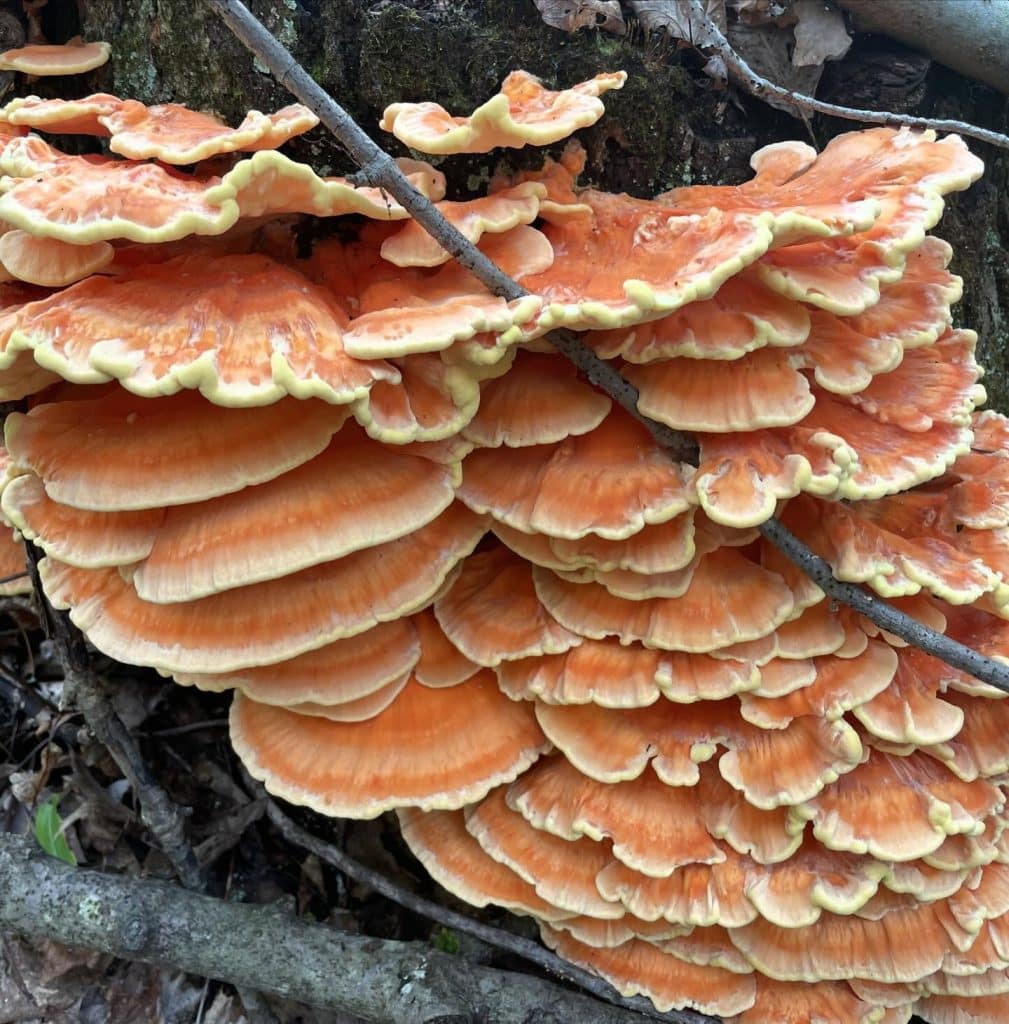
Chicken of the woods (Laetiporus sulphureus) is an edible mushroom that has a flavor and texture that is similar to chicken. Laetiporus sulphureus can be found growing on living or dead hardwood trees from May-November. It has bright orange caps with yellow edges. Pores and flesh are both yellow. Spore print is white. Chicken of […]
Tricholoma “caligatum” complex – False Matsutake
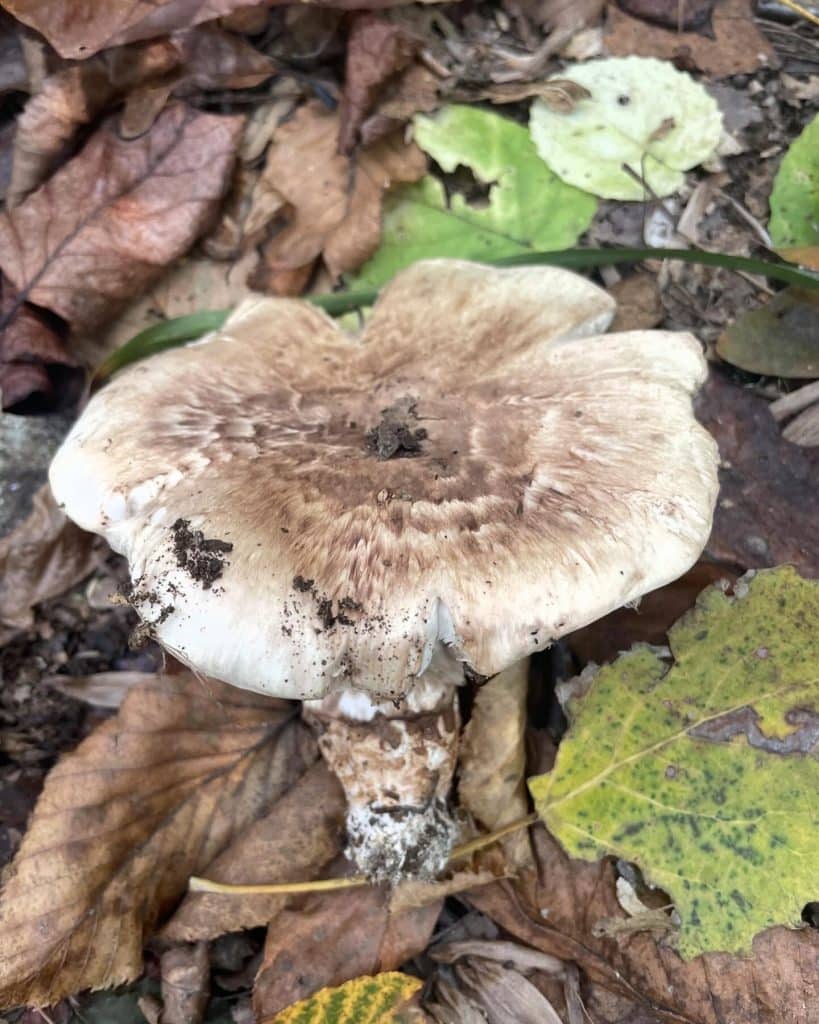
False matsutake (Tricholoma “caligatum” complex) is a group of Tricholoma species that closely resemble the choice edible American matsutake (Tricholoma magnivelare). False matsutake can be found July-October in the northeast. It grows in association with hardwood trees, particularly oaks. False matsutake has a white cap with flat brownish scales. The stem is smooth and white […]
Physalis spp. – Ground cherry
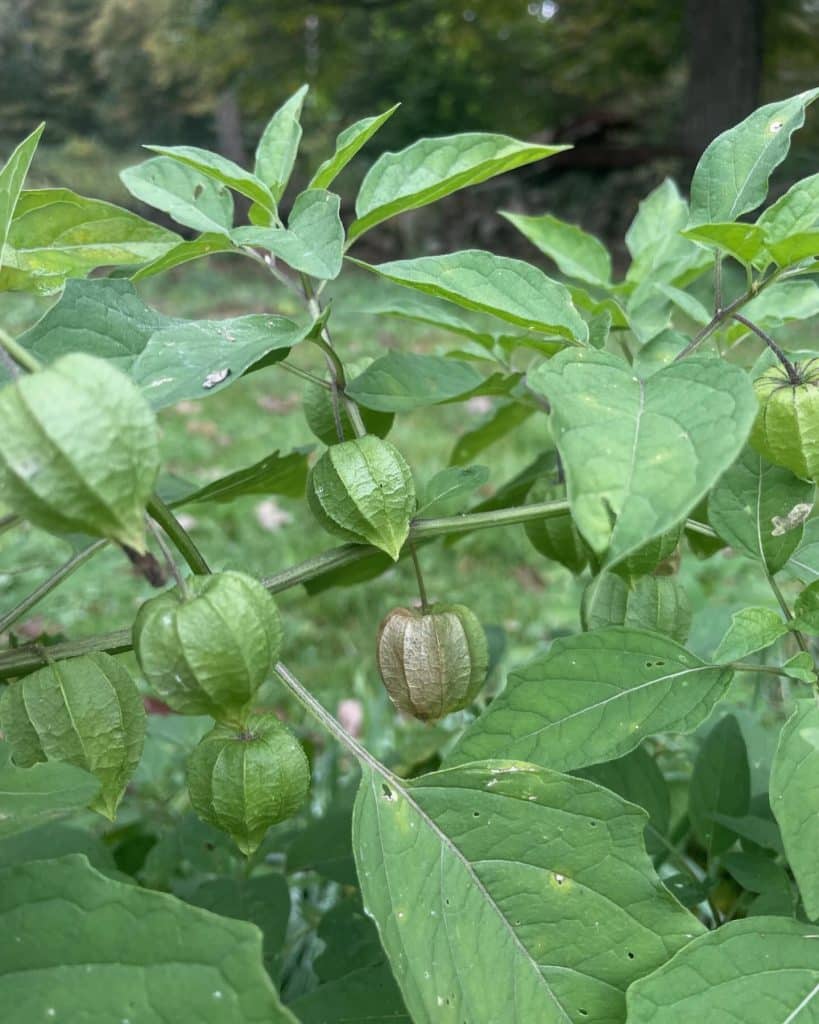
Ground cherry (Physalis spp.) is a native perennial in the nightshade family that produces edible berries in late summer-fall. It can be found in sunny fields or disturbed ground with sandy soil. There are about 30 species of ground cherry that grow in the United States. Ground cherry has toothed, wavy, or smooth leaves. Flowers […]
Solanum nigrum complex – Black nightshade
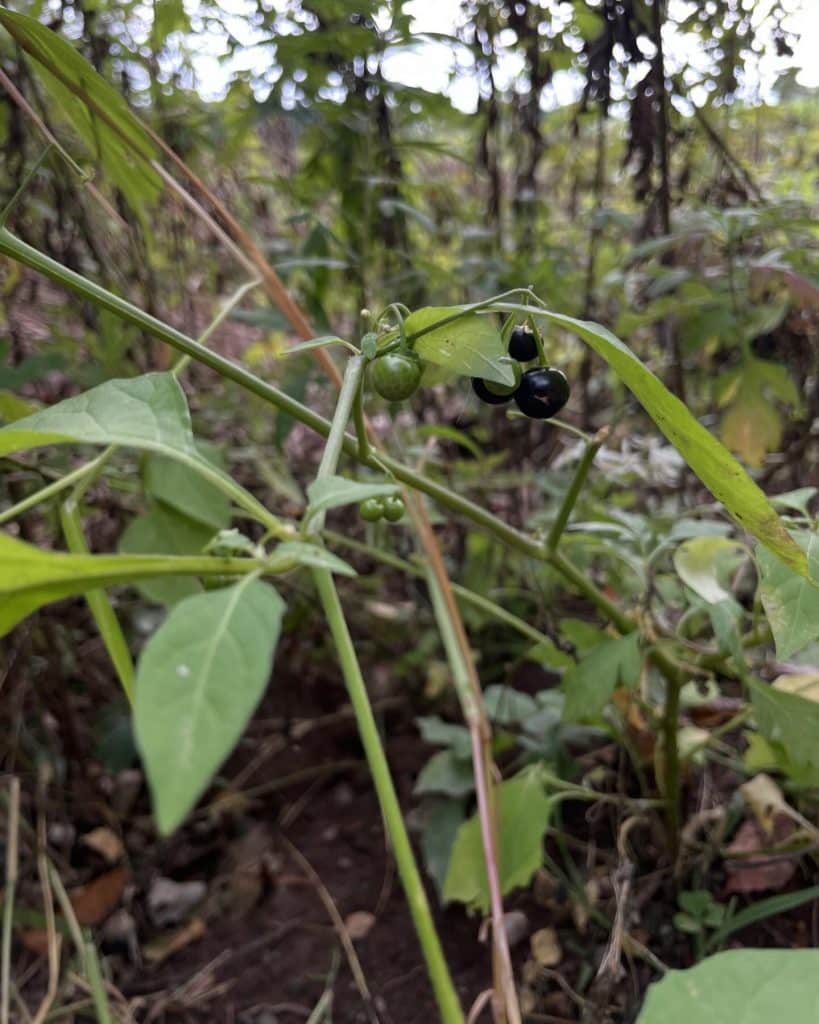
Black nightshade (Solanum nigrum complex) is an edible member of the nightshade family. It is an annual or occasionally a perennial that grows throughout the United States. It can be found in gardens, fields, and disturbed areas. Black nightshade leaves are alternate and can be smooth or slightly toothed. In the summer, the plant produces […]
Hericium americanum – Bear’s Head Tooth
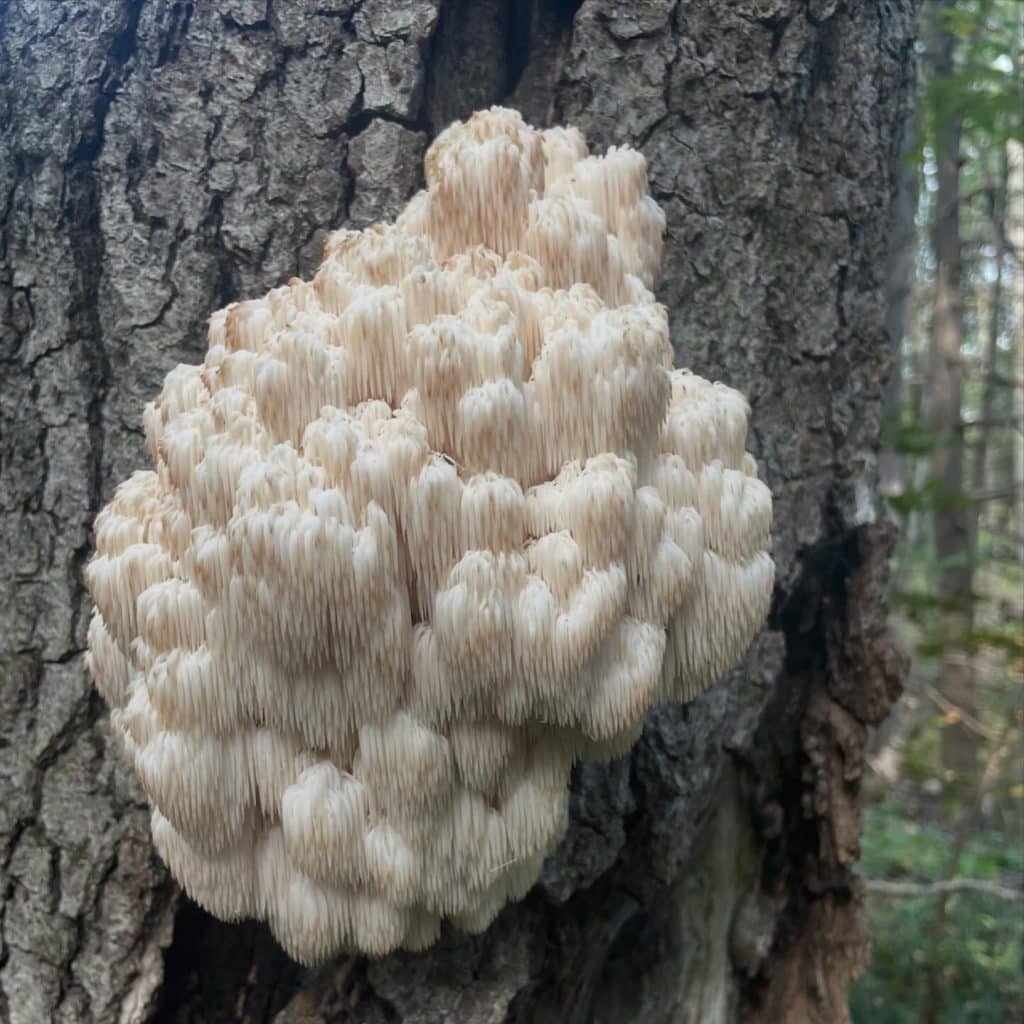
Bear’s head tooth (Hericium americanum) is an edible and medicinal mushroom that is closely related to lion’s mane (Hericium erinceus). It fruits from late August to early November. Bear’s head tooth can be found as a parasite or saprobe on hardwood trees, especially beech, oak, and maple. It is often found in damaged parts of […]
Malva neglecta – Common Mallow
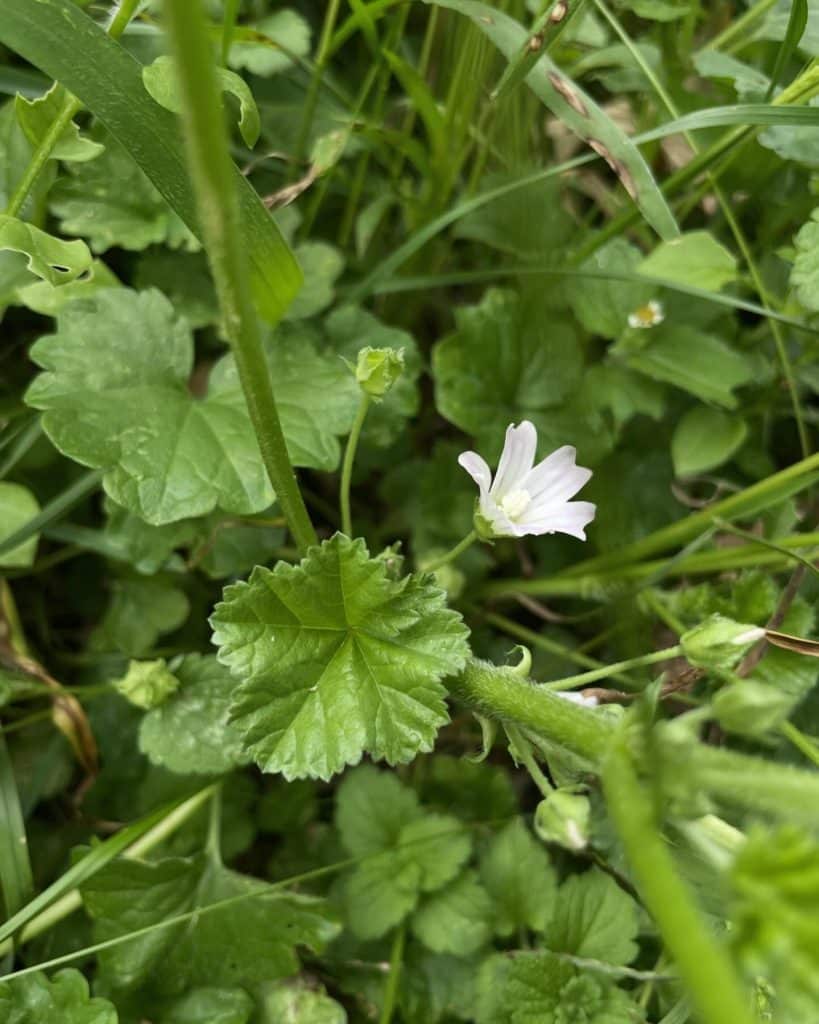
Common Mallow (Malva neglecta) is a non-native plant that is edible from root to tip. It can be found in disturbed areas that receive sun. Mallow leaves are ruffled and hairy. Flowers are lavender-colored and have five petals. The fruits look like miniature, flattened wheels of cheese. Mallow leaves, fruits, flowers, and taproots are edible. […]
Laccaria ochropurpurea – Purple Laccaria
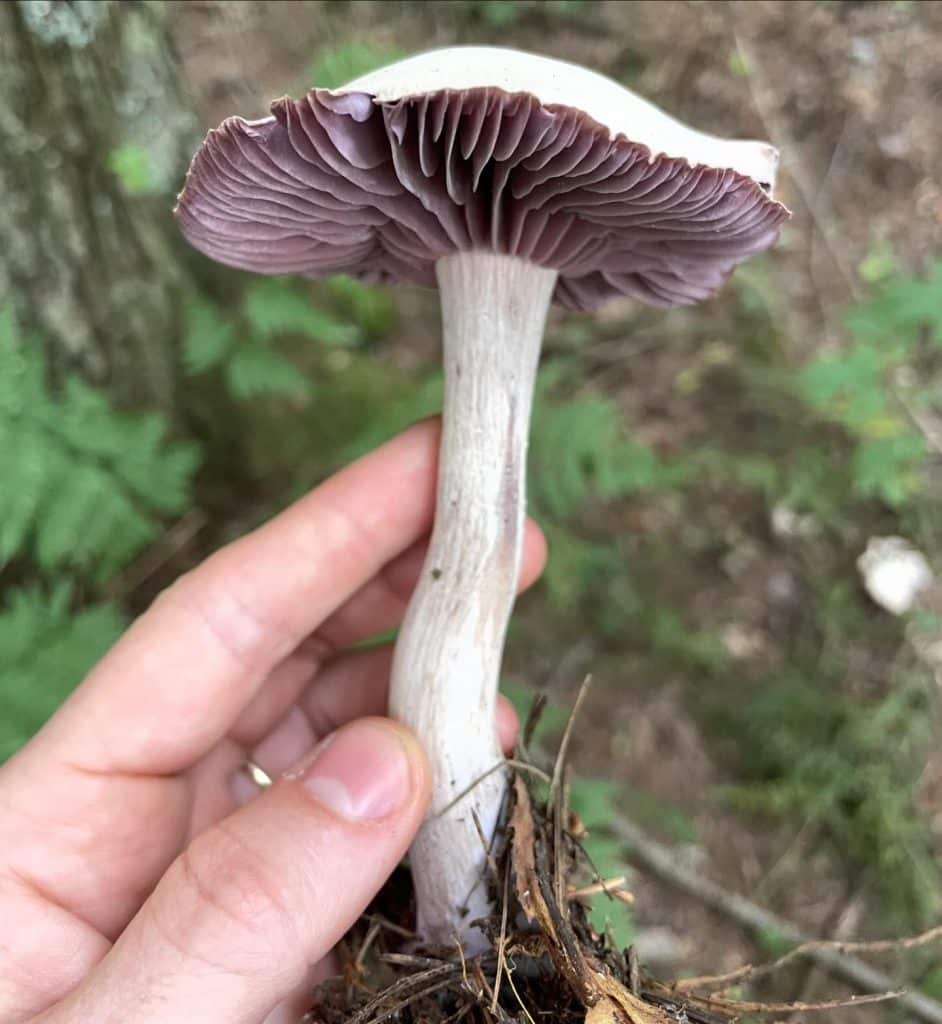
Purple laccaria (Laccaria ochropurpurea) is an edible mushroom that fruits late summer-fall. It can be found in association with hardwood trees, particularly oak and beech, or white pine. Purple laccaria has a cream to violet-gray colored cap. The cap is convex at first, flattening with age. The gills are purple, lightening with age. The fibrous […]
Armillaria mellea – Honey Mushrooms
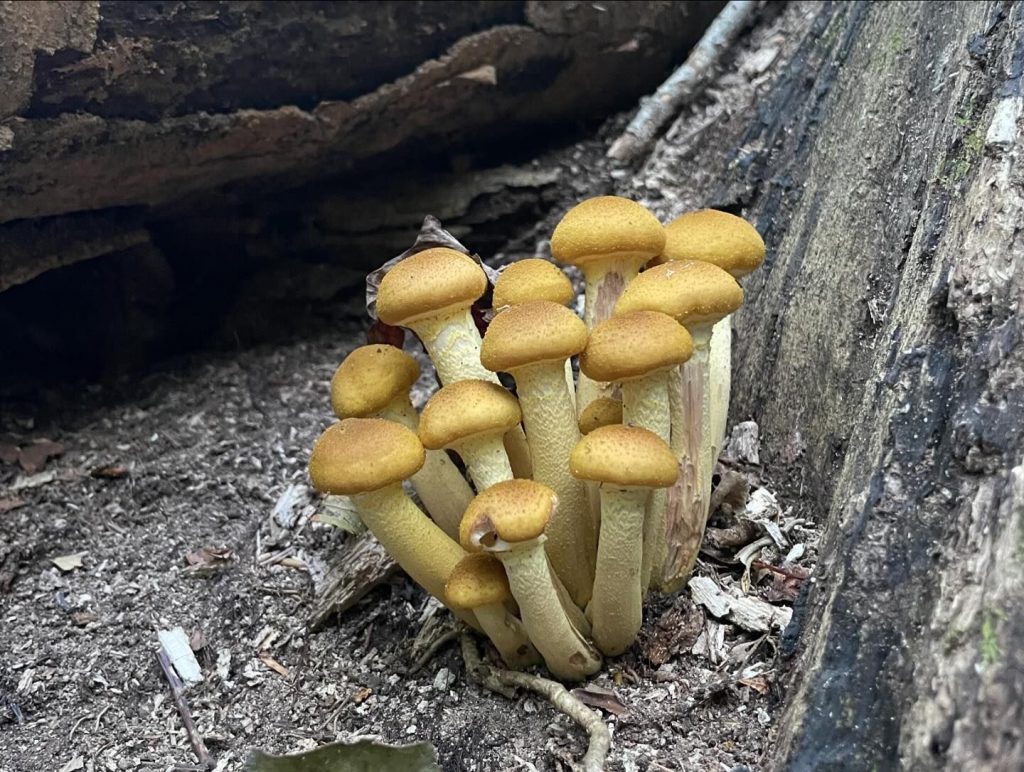
Honey mushrooms (Armillaria mellea) are an edible and medicinal mushroom that fruits late August-November. Honey mushrooms can be parasitic or saprobic. They can grow with a wide variety of tree species, but are commonly found with oak, beech, and fruit trees. They often grow in dense clusters at the base of stumps and trees. The […]
Viburnum lantanoides – Hobblebush
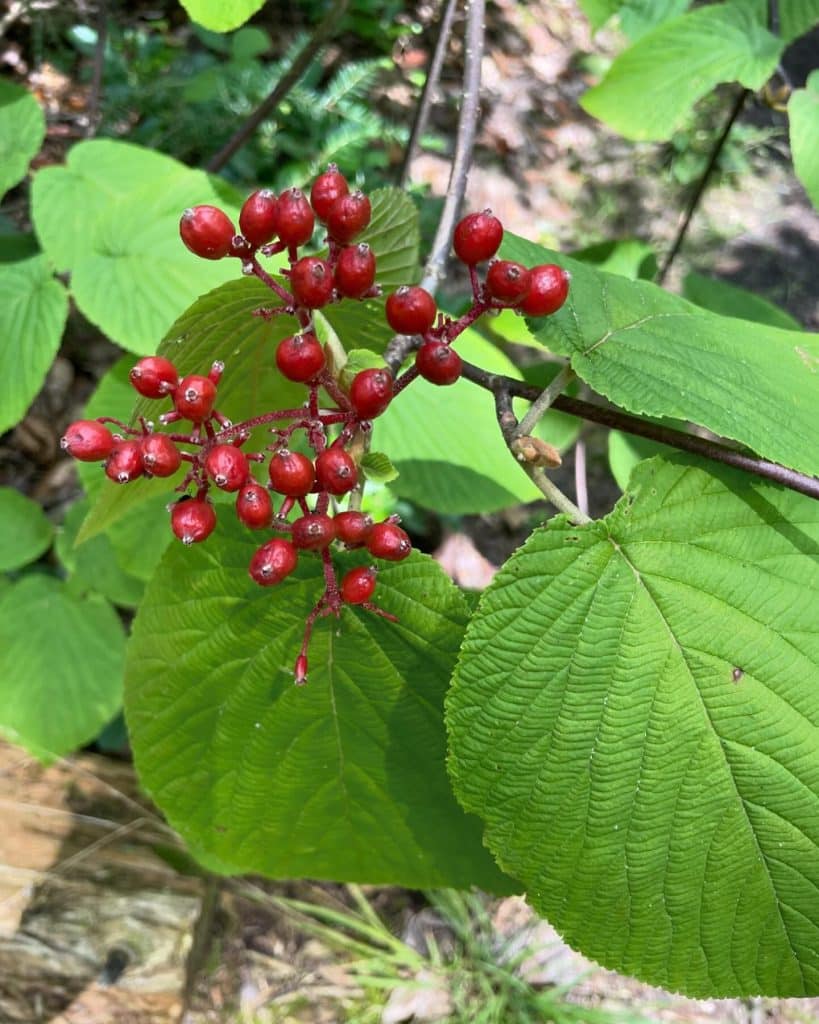
Hobblebush (Viburnum lantanoides) is a native shrub with edible berries. It can be found in rich, moist woodlands. The plant is very shade tolerant. Hobblebush grows particularly well along the Adirondacks where it can form dense patches. The plant produces clusters of flat-topped white flowers in the spring. Flowers become red berries that eventually ripen […]
Craterellus fallax – Black Trumpet
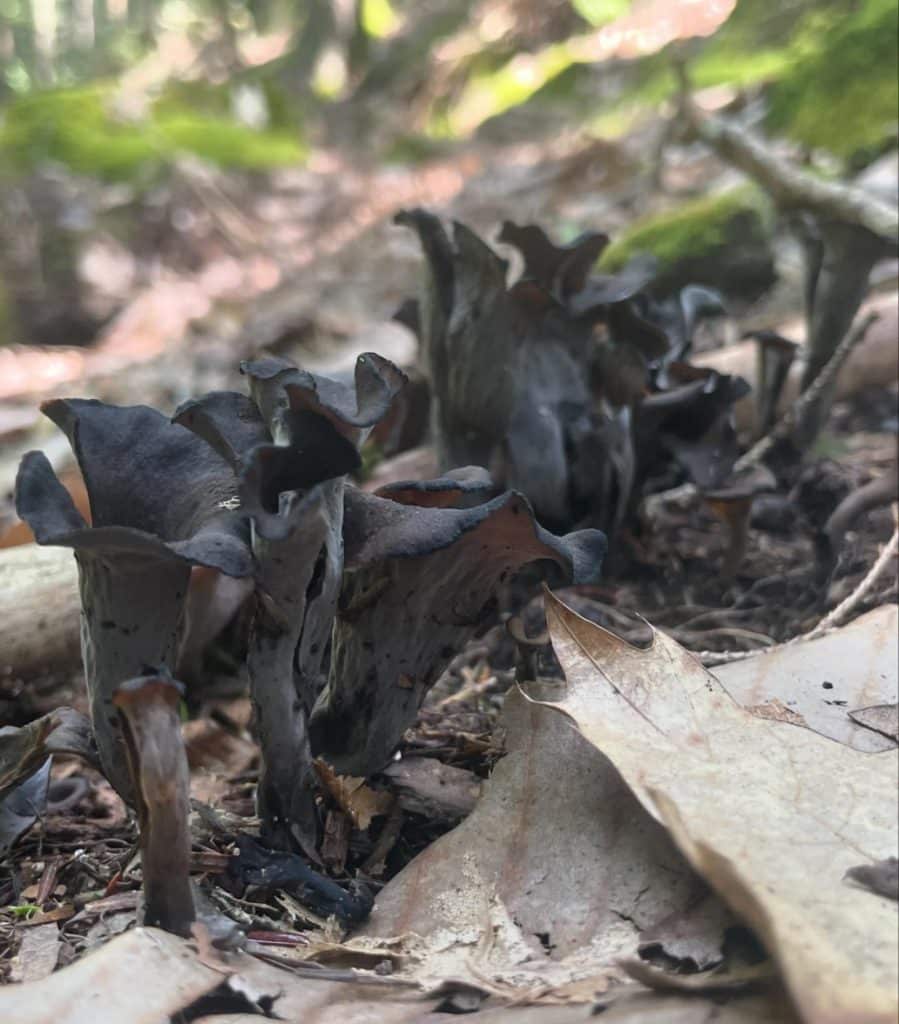
Black trumpets (Craterellus fallax) are a delicious wild mushroom whose flavor is compared to truffles. Black trumpets can be found summer to fall. They often fruit in moss, near oak and beech trees. Black trumpets can be either mycorrhizal or saprobic. They are in the same family as chanterelles and are often found growing in […]
Rosa palustris – Swamp Rose
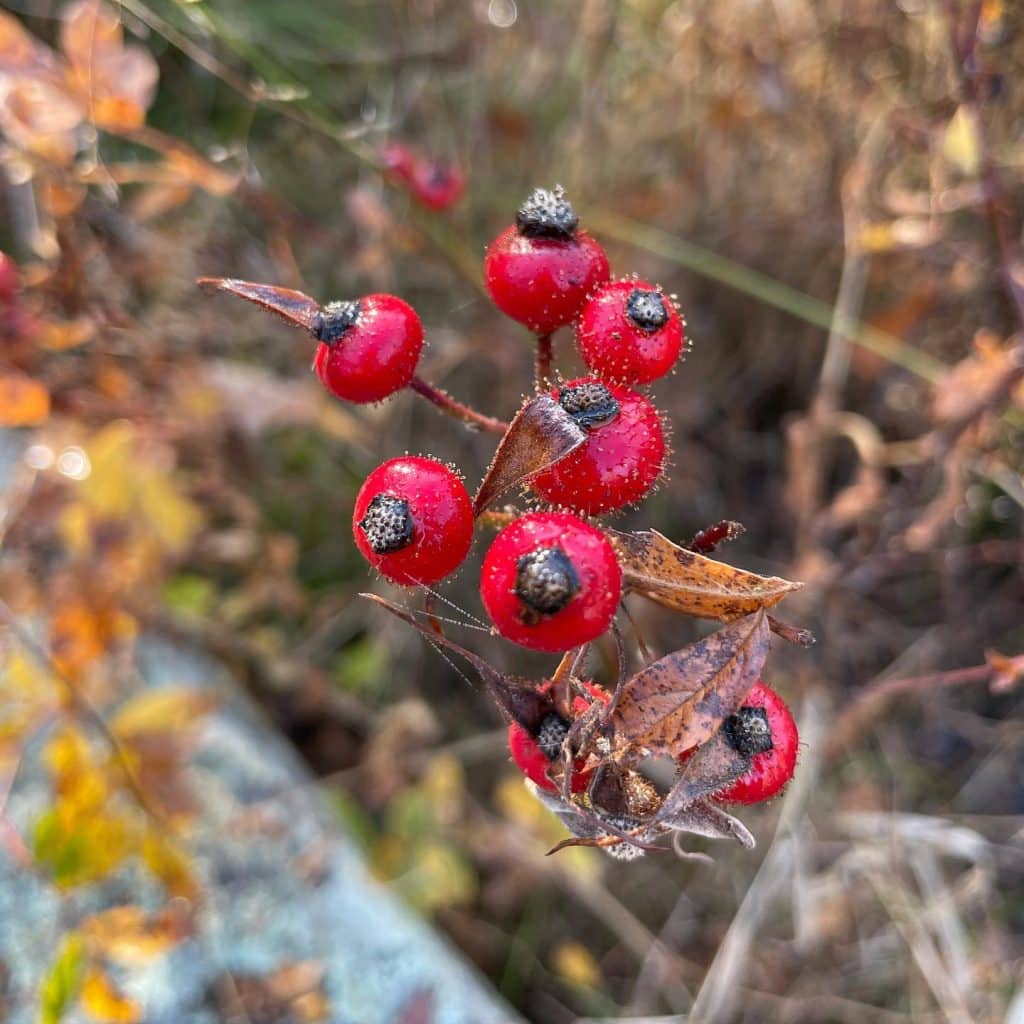
The Swamp Rose (Rosa palustris) is a native plant that produces delicious fruits (rose hips) in late fall. All roses have edible leaves, flowers, and hips. Swamp roses have leaves with serrated edges and curved thorns along the stem. They prefer to grow near rivers or marshes. Swamp rose hips have a tangy taste. They […]
Aronia melanocarpa – Black Chokeberries
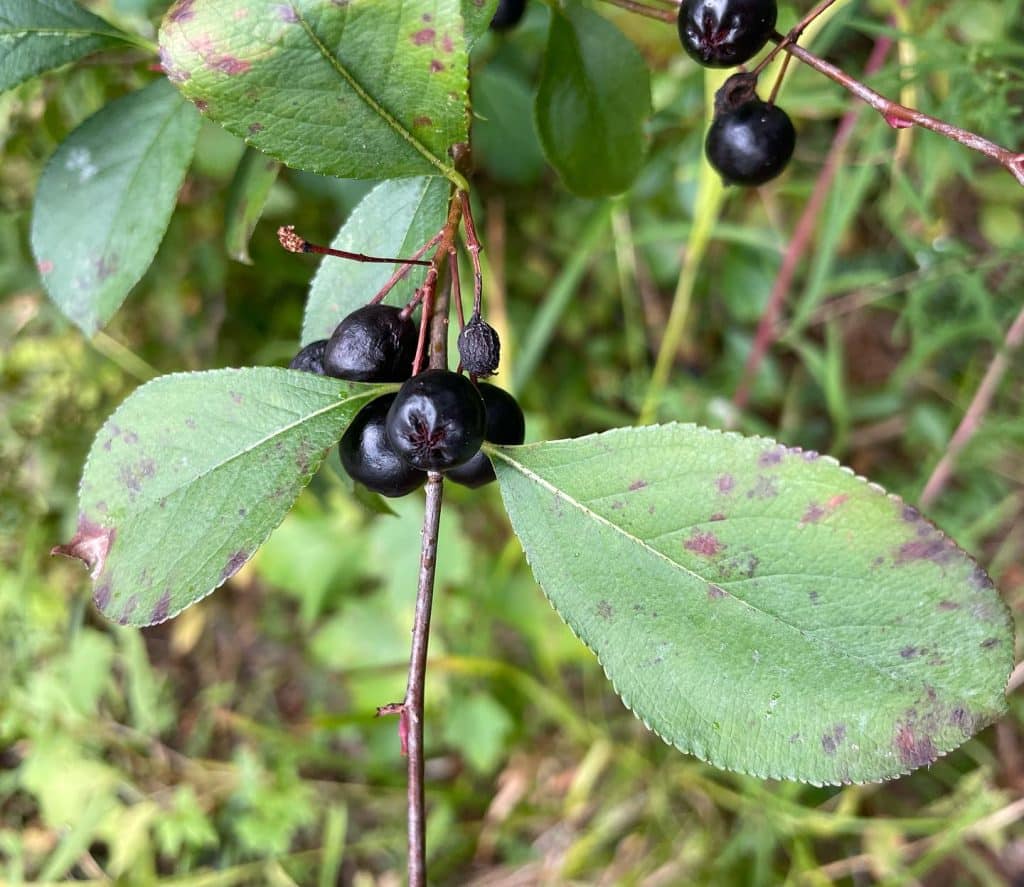
Black Chokeberries (Aronia melanocarpa) are edible, native berries that mature in early Fall. Black chokeberries can be found near swamps, bogs, and lakes. They prefer wet areas. The thornless shrub is self-fertile, so you only need one plant to get berries. Each berry grows on its own stem, in clusters of 2-20 berries. Leaves […]
Lactifluus corrugis – Corrugated-cap milky
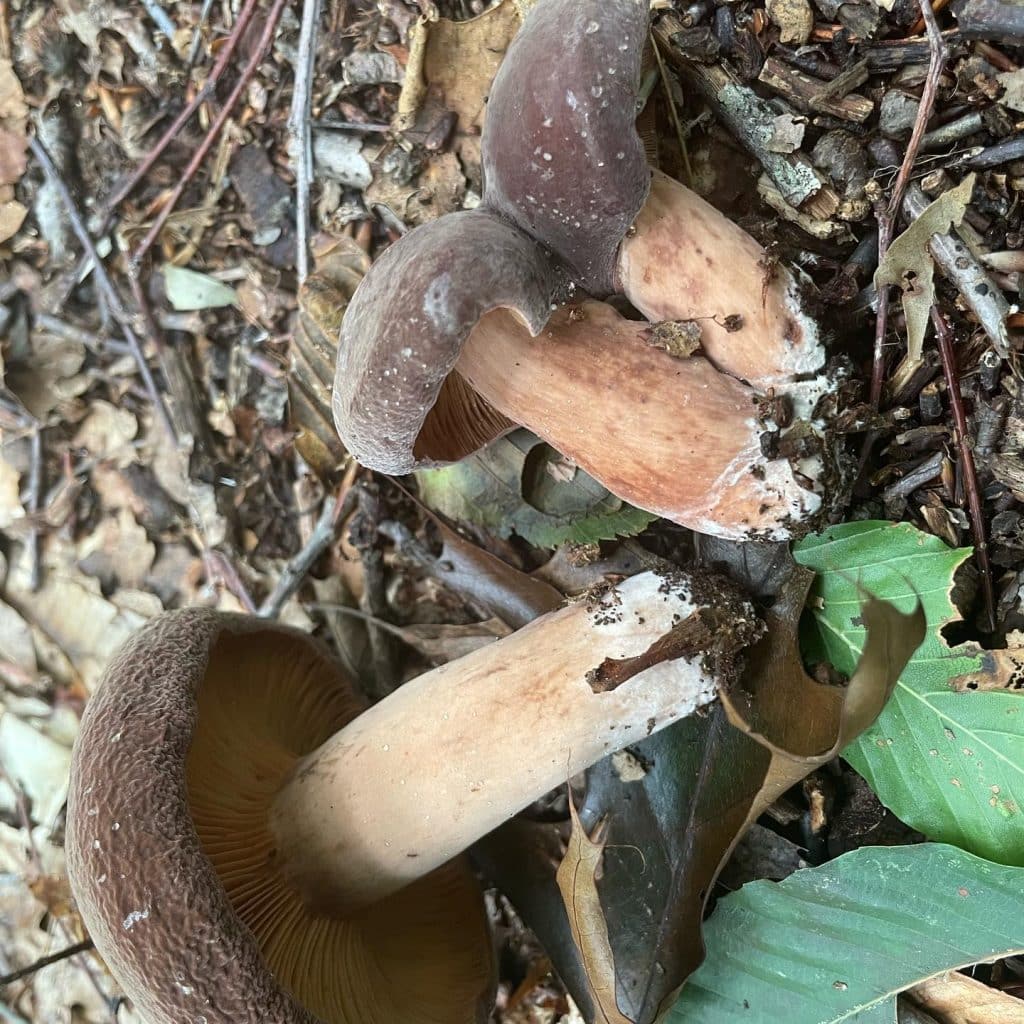
The Corrugated-cap milky (Lactifluus corrugis) is an edible mushroom that is widely distributed in eastern North America. They can be found summer-fall near oak trees. Corrugated-cap milkies have a reddish cap that is covered in a felt-like layer when the mushroom is young. Older specimens have a wrinkled cap appearance. Mushrooms exude a white latex […]
